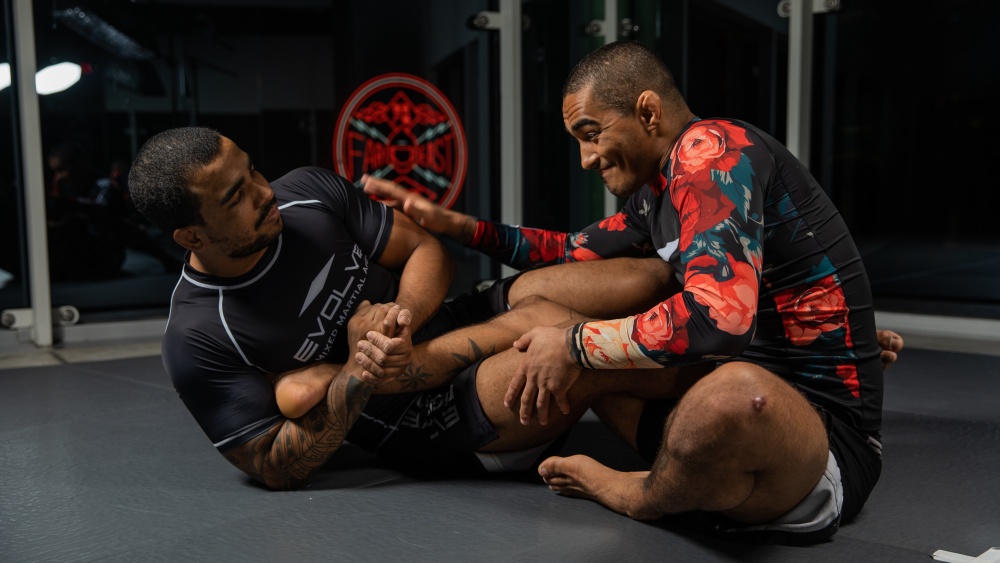Brazilian Jiu-Jitsu is a martial art that has evolved tremendously over the past decades. One of the most game-changing evolutions is the proliferation of leg attacks. The leg game in BJJ was once thought of as a cheap way to win and was primarily used as a last-ditch effort to get the tap. There are a number of highly effective leg attacks available in BJJ, but perhaps the most lethal of all is the dreaded heel hook. Today we’ll talk about this submission and why it’s such a devastating attack in both submission grappling and mixed martial arts.
The Heel Hook Defined
A heel hook is a leg-based submission that aims to twist the foot either medially or laterally using the heel. This technique puts immense pressure on the ankle, causing damage to the foot and the knee. The heel hook can be used as a means to submit the opponent, as well as a way to improve position. In the context of self-defense, it can be used as a pain compliance technique.
For many years, the heel hook has been viewed as highly risky, even when compared to its contemporaries like the straight ankle lock, toe hold, and kneebar. In fact, many tournaments, including IBJJF competitions, did not allow their competitors to use heel hooks until recently. It was just this year that the IBJJF has allowed both reaping and heel hooks for No-Gi competitions. This is, however, for brown and black belts only.
There are 2 main finishes with the heel hook: the outside and the inside heel hook. The application basically depends on the leg entanglement used to secure the leg. Both outside and inside heel hooks are generally applied using an underhooking arm and an overhooking arm near the hip, with one of them around the other leg’s thigh. When the technique is applied correctly, you end up in a position where your opponent’s leg is pressed by your own legs, creating opportunities to expose the heel. While both are valuable techniques used to immobilize and force submissions, most grapplers agree that the inside version is more damaging.
While it is true that the heel hook is a very damaging submission, the same can be said for similar twisting joint locks, like the kimura, for example. It is essential to understand that all submission techniques in BJJ can cause damage, and it is up to the practitioner to fully explore these positions safely.
What Are The Benefits And Drawbacks Of Heel Hooks?
Many consider heel hooks an advanced move and must be performed only by experienced grapplers with an adequate understanding of technique. The main benefit of this technique is that it is possible to immobilize your opponent and cause pain if you manage to hook their foot. The heel hook can cause immediate damage as it is targeting a relatively weak part of the body.
It is important to note that it is critical to use some form of leg entanglement (ashi garami) before attempting the heel hook, or any leg attack for that matter. This ensures that the leg is isolated and thus vulnerable to an attack. This also means that escapes or counters are minimized as much as possible.
As the heel hook is a twisting technique, it can cause significant damage to the foot and the knee. A slight miscalculation in defense, for example, can also mean immediate defeat in a competitive situation. The fight between former UFC champion BJ Penn, and BJJ specialist Ryan Hall is an excellent example of this. BJ Penn was caught in an inside (inverted) heel hook. He mistakenly rolled the opposite way and was forced to quickly tap to the submission.
Adding Heel Hooks To Your Game
Including the heel hook in your overall game is a great way to round out your submission repertoire. It is recommended that all grapplers have a basic understanding of leg attacks, regardless of belt level. Understandably, some gyms prefer to teach leg attacks once a student reaches a certain level of proficiency; this is primarily for safety reasons. As you get more comfortable grappling, it is recommended that you explore a few leg attacks to understand the main concepts, attacks, and defenses behind them.
It doesn’t matter if you are primarily a gi or no-gi player. If you watch high-level matches in both rulesets, you can see that leg attacks are now a requirement to become successful. It is also widely accepted that heel hooks are a key component in ADCC success. This means that if you want to take your game to the next level, including leg attacks into your regular training is a must.
Final Thoughts
It is a common saying the rear naked choke is the king of upper body submissions. We believe it’s time to place the heel hook in the same podium and consider it in the same tier as the venerable RNC. The heel hook is a fantastic technique and has a fight-ending ability similar to a knockout punch in boxing. Its versatility is helpful in all forms of grappling-based sports, and the mere threat strikes fear in most opponents.
It is recommended that you learn heel hooks from a knowledgeable coach. Always take care of your training partners, and don’t apply too much force when you are still trying to understand the intricacies of the technique. A good suggestion is to start by practicing the leg entanglements first. Drill the entries from various positions and learn the common defenses based on the leg entanglement. Do this consistently, and you’re on your way to becoming an expert in heel hooks!
You may also like:

















